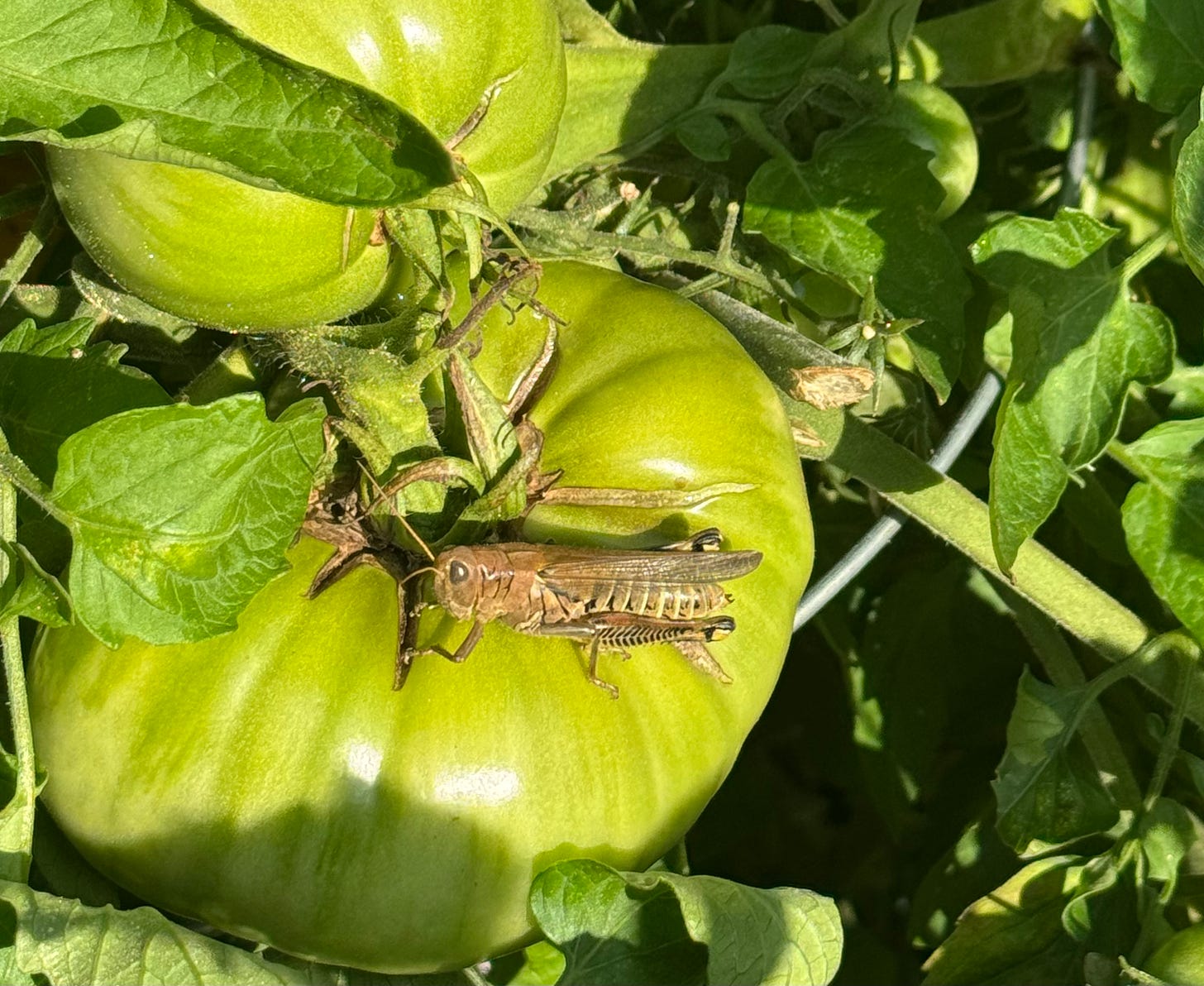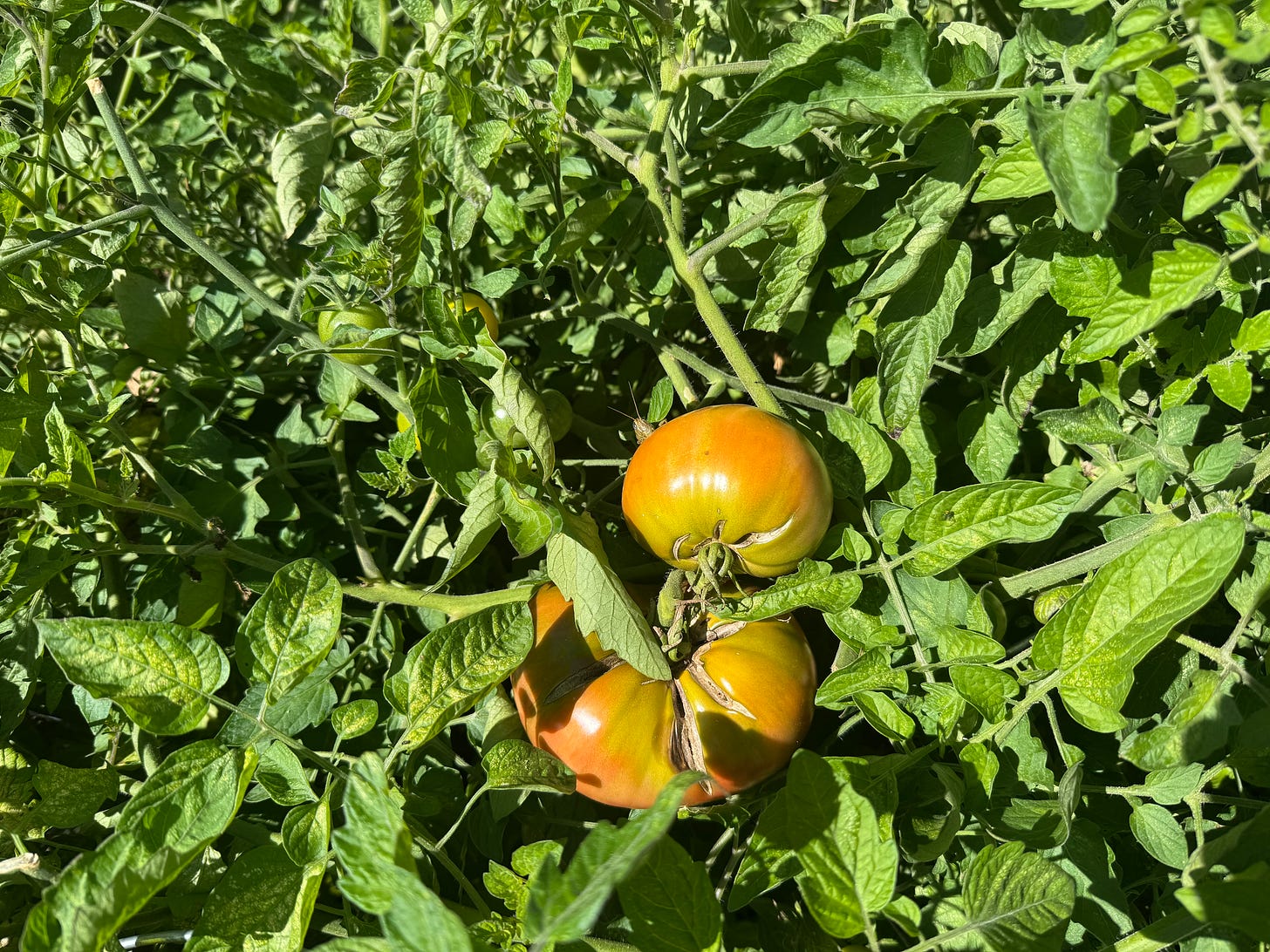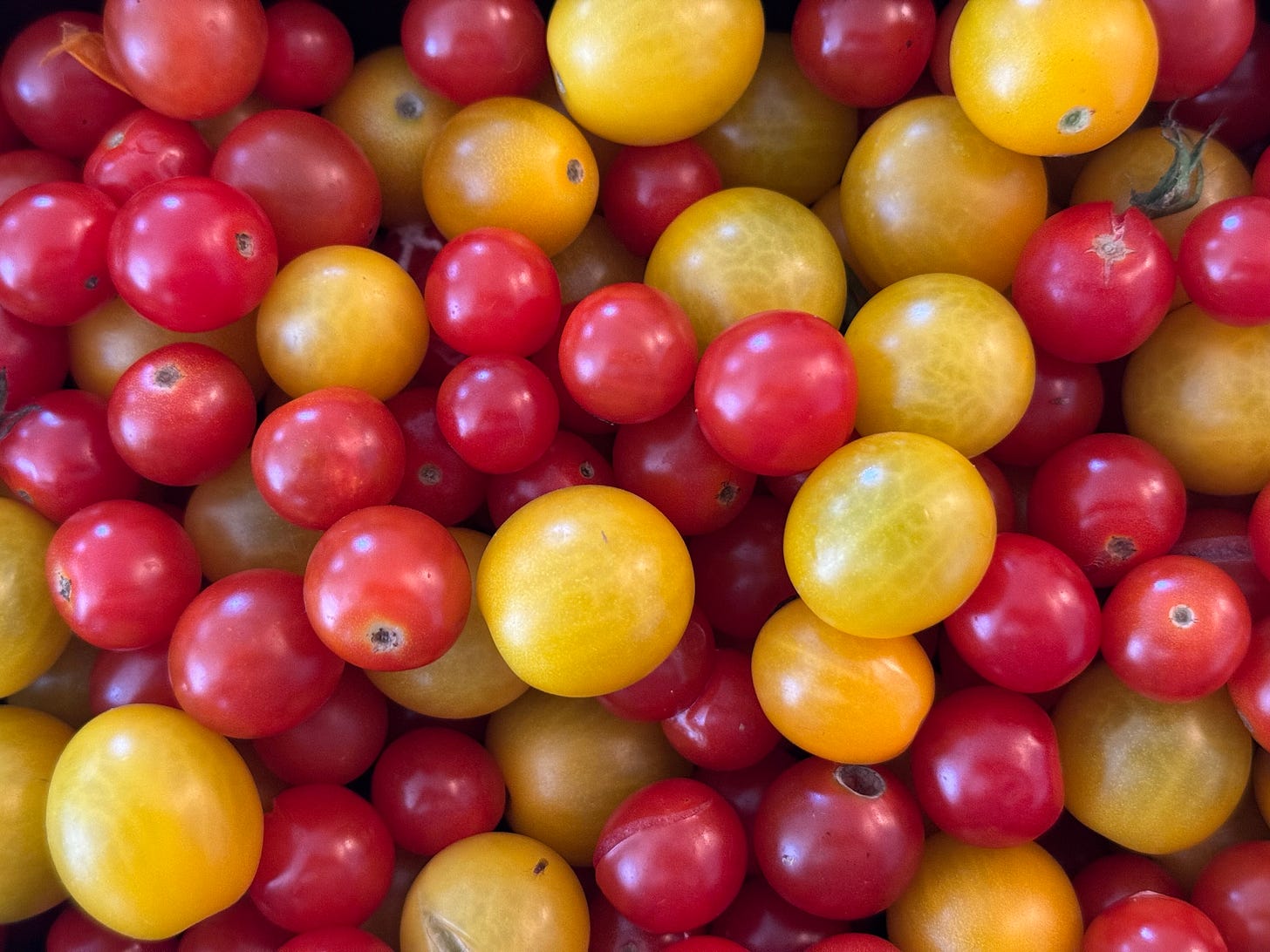How to Not Dance
Or, when the war comes we will eat tomatoes
Hello! Throwing this up here at the top as this seems to be what the influencers do? Nothing Compares to You: What Sinéad O’Connor Means to Us, a collection of 26 women and nonbinary essayists reflecting on the life and legacy of a singular artist and icon, coedited by Sonya Huber and myself, is out now from One Signal/Atria Books! Click the link for purchase options, or look for it at your local independent bookstore. And if you like it, spread the word! Drop us a note, tell your friends, have us on your podcast, or leave a review on your (problematic but unavoidable) online book retailer of choice. Thanks!
In early June I performed with a group of 30-some dancers on the stage at Visceral Dance Center’s Ann Barzel Theater, to two sellout crowds. We’d been working for months, rehearsing hours every Sunday. It was an act of faith and creative exploration and it was exhilarating. This is what I want to be doing I said, over and over, to anyone who was listening and also to myself in my churning monkey mind. This is where I want to be — in class, on stage, in my body.
Since then, I’ve danced three, maybe four times.
Instead, I’ve traveled to South Bend, Seattle, Dublin, West Cork, New York City, the Hudson River Valley, and Minnesota’s glorious Boundary Waters Canoe Area. I’ve launched a book, made new friends, hugged my mom, been awed by art, and sipped campfire coffee at dawn on the stillest of lakes. I have pounded miles of city pavement, ridden various trains and planes, and hauled a 75-pound food barrel down a rocky North Woods path.
Once I got home from the last trip, I turned to the garden. We have a paltry two raised 4 x 8 beds, one in the full-sun of our side yard and one in the shady back, but they’ve been yielding astonishing riches. After being ignored for a month the chard and kale have bounced back to robust levels of deep leafy green that should keep us in vitamin K well into the winter. The choi has bolted but we’ve collected the seeds, and the borage crop has just this weekend been turned by Paul into ale. I’ve been harvesting flying saucers of tender patty pan squash and sowing fall turnips and daikon. And, most significantly, I am engaged in daily battle with the tomatoes that threaten to take over the entire side plot. They’ve smothered the basil and the carrots and are menacing the delicata. One conical cage has collapsed and now the entire mass lists to the south, spilling over into the walkway between our house and the very tidy yard of the next. My tolerant neighbor rolls her eyes and gently chides me for not pruning earlier in the game.
Every morning I go out to assess what has become the Tomato Situation. I ruthlessly lop off dead ends and scoop up handfulls of the fallen, fermenting fruit that has started to attract flies.I greet the grasshoppers who perch on the Cherokee Purples and search under the thick matts of ropy vine for new hidden clusters of gleaming Sun Sugars and Yellow Pears.
I have put up endless pounds of these tomatoes, dehydrating them and storing in oil, cooking them down into sauce, chopping them into salsa, and just popping them fresh into the freezer. And still they come.
In the meantime, I don’t go to the city, I don’t go to the gym. I don’t go to class.
Here’s where I insert something about rest and resilience, about touching grass. But to be honest this denial of something that feels foundational has started to feel a little aggressive, a little dangerous. As though these past few weeks I’ve been trying to see just how far I could disconnect from the markers I’ve been carefully planting the past three years around my sense of self and my post-cancer body. As indicated by the focus of this newsletter of late, publishing a book and going to Ireland this summer detached me — and my writing practice — from the identity I’d constructed as “cancer-patient-who-started-to-dance-again-a-little-obsessively.” It’s been so thrilling, an unexpected expansion of the possibility horizon. But now that I’ve maxed out my 15 minutes as a jet-setting literary microstar, what happens next? Do I go back to the old self, the old material, or do I get to try something new? These tomatoes are a lot of work. Do I even like tomatoes anymore?
Meanwhile, just down the road from my home in Waukegan, the Great Lakes Naval Station is being prepped to welcome 200 ICE agents — and the National Guard? Unclear — for a much-hyped month of aggressive anti-immigrant action in the lawless hellscape that is Donald Trump’s racist fantasy of Chicago. Information is scant, as no state or local official has heard a peep from the federal government and, it goes without saying but I guess we have to say it anyway, has not asked for this.
You can go here to listen to Illinois governor and our next president J.B. Pritzker read Trump and his lackeys the riot act. I am so grateful and proud to live in Illinois at this moment, when Pritzker and his administration are doing the forceful work of resisting with leadership and moral clarity, without the spotlight-hogging hubris of some other governors whose names rhyme with “blue gum.” And it is understandable that with Chicago as the declared site of this looming blitzkrieg, Chicago is bracing and preparing for whatever comes next. Chicago activist Kelly Hayes, another leader I look to for moral clarity, created this very helpful spreadsheet for how to prepare for a military crackdown at the neighborhood level, and I recommend following her for links and good medicine in general.
But up here in Lake County, we are also holding our breath. Chicago is 33 miles from the base; Waukegan is six. Waukegan is a working-class city, majority Black and Brown, with an estimated 57% of the 90K population Latine or Hispanic. There are a lot of immigrants here, and there is very little political capital. Waukegan won’t give Trump the sizzle reel he craves of tanks rolling past the Picasso, but our supermercados and taquerias are alarmingly closer to hand.
On Friday, Waukegan mayor Sam Cunningham and North Chicago mayor Leon Rockingham joined local immigrant rights advocates, faith leaders, and other elected officials outside Veterans Memorial Park in North Chicago (which sits between Waukegan and the base) to decry the arrival of federal agents and possible troops at the base.
“ICE raids do not make us safer, they make us afraid,” said Rockingham. “These raids aare not law enforcement, but instead they are fear enforcement. I cannot go quietly into the night and allow our cities to be staging grounds for inhumanity.”
“The idea of a convoy of armored vehicles rumbling around Lake County for political posturing is straight out of a dystopian novel,” Lake County Board Chair Sandy Hart told the Daily Herald. “And yet, here we are.”
The night before, Chicago musician Al Scorch, who I’ve been friendly with for years, made the trek to Waukegan to play a free concert at downtown’s Jack Benny Plaza. Accompanying himself on banjo and guitar, he sang protest songs for a crowd of maybe three dozen. “Look at this,” he mused, during a tuning break. “We’re out here exersizing our constitutional right to public assembly. Isn’t that great?”
Turning back to his banjo, as the small crowd cheered, he continued with grim wit, “Can’t believe I’m out here celebrating the existence of basic civil rights, but here we are.”
Later, at the Ray Bradbury-themed brewpub across the street, we talked a little bit about the challenfges of working for progressive change in a city that reliably votes Democratic, but where turnout is abysmal. Where there’s almost no money, save for the largesse poured into pet projects like the Genessee Theater by the Uihlein family, business supply titans, election deniers, and billionaire Trump donors.
“I’m not under any illusion that my tiny business can change much of anything,” said Mike, who owns the bar and who had posted outraged and at length on Facebook when the news about the base broke on Wednesday. “All I know is that at this point we can’t stay silent.”
These events of the past few days are not good, but they helped shake me from my late-summer stupor. Ready or not, the other shoe will drop in the days to come, and we’ll have to figure out how to meet the moment, in Chicago and up here to the north. Who will we become?
This past week I did finally dust myself off and go to dance class — twice — and met a friend in Chicago for dinner, all of which restored me to myself a bit. Tomorrow I’ll be at Indivisible Western Lake County’s Labor Day rally for working class power to stand against rising fascism and for so many other crucial, precious, threatened things that they barely fit on the graphic. And next weekend I will be back on the book beat at Chicago’s Printers Row Lit Fest, repping for the University of Illinois Press in Tent E all day Saturday, Sept. 6, and then switching hats Sunday, Sept. 7 for an excruciatingly timely panel on Sinéad O’Connor’s legacy of dissent. Chicago Tribune music critic Britt Julious will join me and Nothing Compares contributors Zoe Zolbrod and Gina Frangello to close out the festival at 5 pm on the Center Stage.
I’ve said it before but here I am again for the back row. Sinéad, with her uncompromising commitment to her ideals and her vocal advocacy for the most vulnerable among us — for children, for trans folks, for immigrants, for Palestinians, and for all who have been colonized, abused, and oppressed — is the role model this moment demands. She never stayed quiet and neither can we.
Until next time, here’s a recipe for my friend Sheila’s delicious tomato pie. Eat up — we’re going to need all the strength we can get.
Tomato-Cheddar Pie
PIECRUST
2 cups all-purpose flour
1 tablespoon baking soda
1/4 teaspoon kosher salt
1/2 cup (1 stick) butter
3/4 cup milk
FILLING
2 pounds plum tomatoes (about 10), peeled and sliced
1/4 cup fresh basil or oregano leaves, chopped
3 scallions, chopped, or 1/4 cup chopped chives
1-1/2 cups (about 6 ounces) shredded sharp Cheddar
1/3 cup mayonnaise
2 tablespoons lemon juice
1/2 teaspoon kosher salt
Freshly ground black pepper
Heat oven to 350 degrees Fahrenheit.
For the crust, place the flour, baking soda, salt and butter in a food processor fitted with a knife blade. Pulse until the butter is cut into small bits. With the motor running, slowly add the milk through the feed tube until the dough comes together and sits on the blade. Remove and divide in half. On a lightly floured counter, roll half the dough into an 11-inch round. Use it to line a 9-inch pie plate.
Layer the tomato slices, basil and scallions in the pie shell. Top with half the cheddar. In a small cup, combine the mayonnaise, lemon juice, salt, and a few grinds of pepper. Pour over the tomatoes and top with the remaining cheddar. Roll out the remaining dough and place it on top of the filling, folding the edge under and crimping it to seal. Cut three or four slits in the dough so the steam can escape. Bake for 45 to 50 minutes or until bubbly. (Cover lightly with foil if the crust begins to get too brown.) Remove from oven. Cool 10 minutes before cutting into wedges.






My sister taught in Waukegan for a decade and I know that school district must be so worried for its families. Thank you for posting!
I am so proud of Illinois too and am angry about ICE coming to Great Lakes. I grew up in Lake Bluff close enough to the base in that we could hear the graduation bells ringing and I live In Libertyville now, so to have all that hatred so close to home makes my blood boil. I’ve gotta get some signs made so I’m ready to protest.